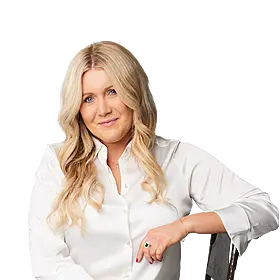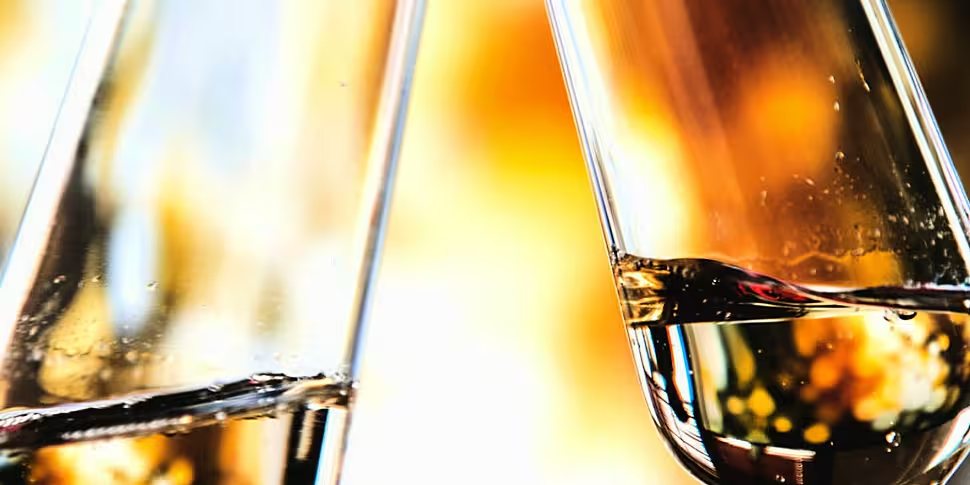Tomas Clancy reviews Champagne Marie Courtin, Résonance 2014, Fabre Montmayou, Gran Vin, Mendoza, Argentina 2014 and Wild Burrow Gin By Lidl
Champagne Marie Courtin, Résonance 2014
Pricing : €59
Available : Independent off licences and wine shops.
This is what is known as a Grower-Champagne, that is a champagne made not by a multi-billion euro luxury goods firm, but owned by a winemaker, a family farm or a small co-operative. Here Champagne is deliberately made in a way that emphasise that it is just another wine that can reflect terroir and the personality of the owner or producer.
In this case the owner is Dominique Moreau who only began her journey into Champagne ownership in 2005 when she planted vines in a small set of fields in the very far south of the Champagne region called the Cote des Bars in her local village, Polisot.
This is as far from the glamorous world of Reims and Epernay the twin capitals of Champagne as you could imagine.
Moreau had a dream of making a fully biodynamic wine, very much in the manner of the cutting edge wineries from Burgundy to Napa Valley were doing.
This Champagne is made from 100% Pinot Noir, planted by Moruea and she has named the field and the cuvee here, Marie Courtin because that is her Grandmother, one of the vast array of hard working, ambitious and humble people who actually are the backbone of what is at the end of the day an agricultural activity.
The grapes here are tended to in all the usual biodynamic ways, which is essentially a very strict form of organic farming with an overlay of philosophy, some of which is evidently useful and some of which is controversially, mystical.
The non use of chemicals, the careful hand harvesting and gentle holistic work in the vineyard throughout the year is all clearly positive. Using a pendulum to determine the soundness of grapes as Moreau does is less clear. Happily she seems to have held back from pushing water memory and blooding the fields at midnight two other practices in some biodynamic estates.
The result is however superb. The Bars region is 129 km south of Reims, that’s the equivalent of Dublin to Athlone, so we really are in Burgundy climatically and the Pinot Noir feels that way.
This is a zesty, precise, steel tank raised wine that receives no dosage of sugar and the lip-smacking, mouth-watering freshness of this delicious wine confirms that is the case. There is real, grippy texture, expressive of the chalky soils in the Bars. A sign of the ay forward in Champagne perhaps.
Fabre Montmayou, Gran Vin, Mendoza, Argentina 2014
Pricing : €45
Available: Independent off licences and wine shops.
Malbec 85 16 months in French oak%, Carbernet Sauvignon 10%, Merlot 5%
This is an all signing and dancing superstar attempt by the ever ambitious Argentine wine industry. For the last few decades Argentine wine has played a very far second place South American wine source to Chile and seemingly happy to produce a very large bulk of wines for the cheaper mass market.
The Malbec grape has become the star and symbol of Argentine wine but as it is so closely associated with the mass market desires of many Chilean wineries rush to market it has been difficult to attract a groundswell of fine wine attention.
The problem is that Chile has effectively now frozen Argentina out of the middle and lower ends of the market and if Argentine wine is going to prosper it is going to have to become much more ruthless at the lower end of the market, and make very much cheaper wines to compete, or it can reboot itself as a super fine wine destination.
This later course is already well underway with biodynamic and independent producers cropping up across Argentina and star wineries like Catena focussing on high net worth US and European buyers.
The real sign f change will be how people react to wines like this example, the top wine of a well-regarded but not internationally famous producer like Fabre Montmayou.
The winery was founded by a French emigre from Bordeaux, Herve Fabre, whose family have been making and selling wine as negociants in Bordeaux for generations, so Herve knows about placing wines and building attention.
This wine is made from very high altitude Malbec which makes up 85% of the blend. That too is crucial, in that it is deliberately a blend not a single varietal so channelling Bordeaux in a way and so we find 10% Cabernet Sauvignon and 5% Merlot in the mix too. The overall impact is something like a polished, super deluxe, spicy Pomerol.
Now such a wine from Bordeaux would sell for perhaps €150- or €200 but this while very dear at €45 is a fraction of that pricing.
The issue is that the wine is startling fine, but you will have to explain its sourcing and why it deserves that price and if you are giving it as a present probably explain why it is a fair substitute for a Bordeaux or Burgundy as a gift.
Only when like Californian wines today no explanation is needed will Argentina have succeeded, it took Napa 50 years, so they have plenty of time, and unfortunately at that time the prices will likely have surpassed Bordeaux as Napa wines have. So for the moment, this is a wine lovers time to experience very fine wine at relatively reasonable prices. A great special event wine of plush, delicious charm.
Wild Burrow Gin By Lidl
Pricing : €24.99
Available : Lidl Supermarket Stores, Nationwide
The Gin Revolution in Ireland has been building to its current high status for just under a decade now. It started out as part of the rival in Whiskey Distillation, but has now become a dedicated and hugley popular part of the entire spirits landscape in Ireland.
Much of the current revolution in Irish Gin production has made a very distinct break with Ireland’s Gin past which was dominated by the idea and style of London Dry Gin and was probably most famously represented by Cork Dry Gin one of the icons of Ireland along with Kerrygold, Guinness and The Dubliners throughout the latter half of the twentieth century.
Today’s Irish Gin began when the move to reignite artisan distilleries began 10 years ago with John Teeling in Cooley and pioneers like Oliver Hughes and Liam Lahart in Dingle Distillery and Denis McCarthy, Ger McCarthy and John O’Connell in West Cork Distillery.
Along with Drumshanbo, Glendalough and Shortcross distilleries the emphasis in the new wave Irish Gin has been super terroir orientated with local, seasonal and indigenous materials being used in the flavour profile distillation process. In other words the botanical component of the gin has now pressed far beyond the culturally required elements such as Juniper.
This havs give Irish Gin its own totally unique flavour and ambition.
Many of the Gin Distilleries were set up to make whiskey, but that process is slow, requiring the distilled spirit to be put into barrels for 3 years and a day before it is legally able to be called Irish Whiskey.
However it requires another 9 years in barrel if it is going to be a 12 year Old whiskey, another 15 years if it is going to be sold as 18 year old whiskey, and so on.
In the meantime, many distilleries sought a source of income, and selling the plain unaged spirits infused with juniper as Dry Gin seemed the route, but the artisanal and local conceptions of these pioneers lead them to look to local foragers and to seek out places across Ireland with unique and fascinating botanical markers from Gorse to Wild Garlic.
When Lidl decided to enter the Irish Gin landscape they partnered up with one of the earliest pioneers West Cork Distillery to produce their Wild Burrow Gin.
This Lidl Gin has now harvested a display case full of trophies including the current champion Gold Medal at the Irish Qulaity Food and Drink Awards 2018.
The secret to its success has been in no small part to being part of this, terroir orientated or locality expressive distillery movement. So on the label of the Wild Burrow Gin itself you can see a drawing of Rabbit Island just off the coast of Cork, its longitude and latitude coordinates are actually on the label too for all you google map fans.
Here many of the 12 different botanicals infused in the distillation process are sourced such as Angelica, Dandelion Flower, Blackberry Leaves, Scots Pine, Wild Garlic, Wild Fennel, and Furze Petals and along with Orris Root, Orange, Lemon, Coriander and the legally important Juniper these botanical create a picture of wild, lean, crisp, piquant, bracing Cork coast.
Above all the create a sense of Ireland for many. On its own chilled from the fridge, with ice or with great well made tonic water this is a mouth-watering, lip-smacking delight at a fantastically well positioned and alluring price.









